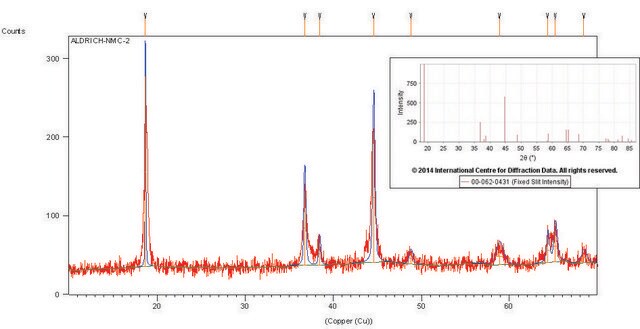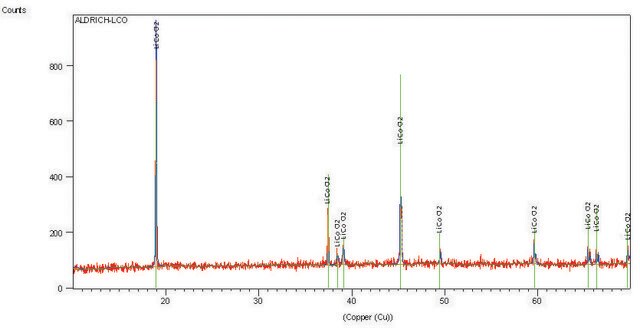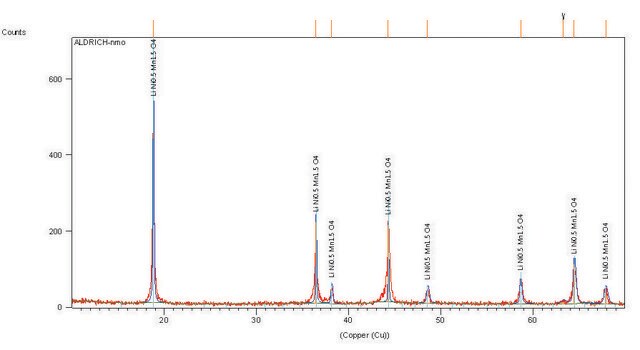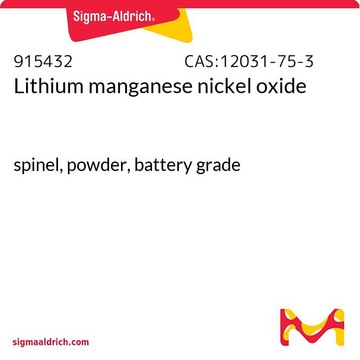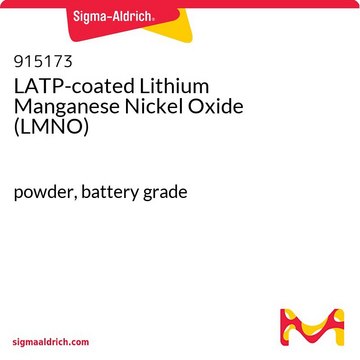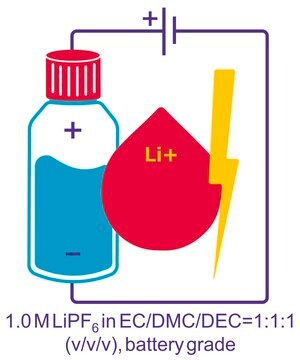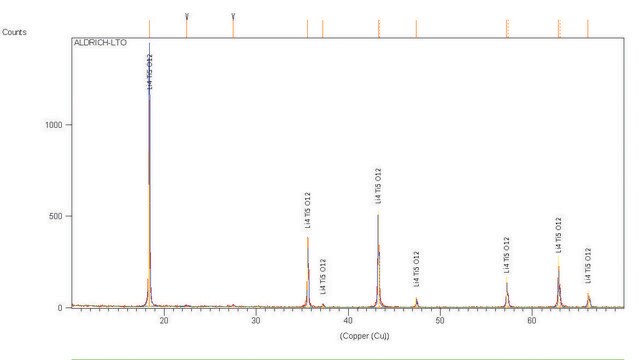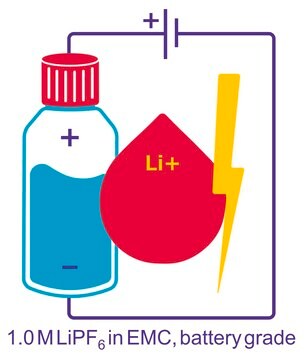760994
Lithium nickel cobalt aluminium oxide
powder, <0.5 μm particle size, >98%
Synonym(s):
NCA
About This Item
Recommended Products
grade
battery grade
Quality Level
Assay
>98%
form
powder
mol wt
Mw 110.45 g/mol
composition
LiNi0.8Co0.15Al0.05O2
greener alternative product characteristics
Design for Energy Efficiency
Learn more about the Principles of Green Chemistry.
sustainability
Greener Alternative Product
particle size
<0.5 μm
mp
>1000 °C (lit.)
density
4.45 g/cm3 (lit.)
application(s)
battery manufacturing
greener alternative category
General description
Application
Features and Benefits
Legal Information
related product
Signal Word
Warning
Hazard Statements
Precautionary Statements
Hazard Classifications
Carc. 2 - Skin Sens. 1
Storage Class Code
13 - Non Combustible Solids
WGK
WGK 3
Flash Point(F)
Not applicable
Flash Point(C)
Not applicable
Choose from one of the most recent versions:
Certificates of Analysis (COA)
Don't see the Right Version?
If you require a particular version, you can look up a specific certificate by the Lot or Batch number.
Already Own This Product?
Find documentation for the products that you have recently purchased in the Document Library.
Customers Also Viewed
Articles
Professor Qiao’s laboratory lays out recent advances in conversion type lithium metal fluoride batteries. This review explores key concepts in developing electrochemically stable microstructures for wide Li-ion insertion channels.
Solid oxide fuel cells (SOFC) and solid oxide electrolyzers (SOE) are in the early stages of development; however, the performance that has been achieved shows promise for conversion between chemical and electrical energy.
Li-ion batteries are currently the focus of numerous research efforts with applications designed to reduce carbon-based emissions and improve energy storage capabilities.
The critical technical challenges associated with the commercialization of electric vehicle batteries include cost, performance, abuse tolerance, and lifespan.
Our team of scientists has experience in all areas of research including Life Science, Material Science, Chemical Synthesis, Chromatography, Analytical and many others.
Contact Technical Service